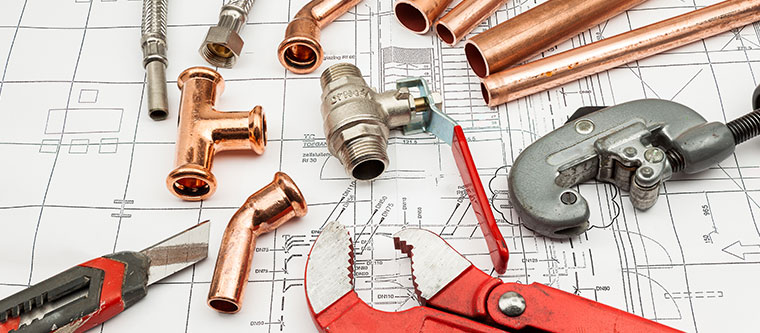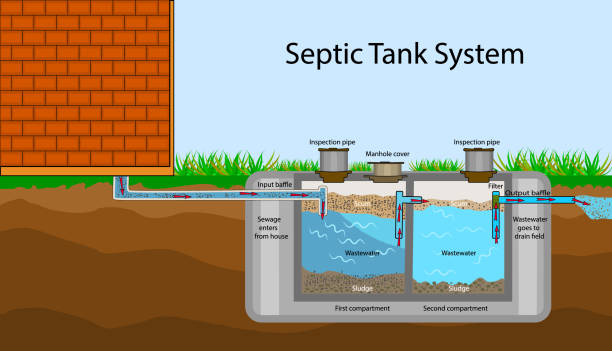Just how do you actually feel when it comes to The Inner Workings of Your Home's Plumbing?

Recognizing just how your home's plumbing system functions is vital for every single home owner. From providing clean water for drinking, food preparation, and bathing to securely getting rid of wastewater, a well-kept plumbing system is crucial for your family members's health and wellness and comfort. In this detailed guide, we'll discover the elaborate network that composes your home's plumbing and offer pointers on upkeep, upgrades, and dealing with usual issues.
Introduction
Your home's pipes system is greater than simply a network of pipelines; it's a complicated system that ensures you have accessibility to clean water and efficient wastewater elimination. Recognizing its elements and how they interact can assist you prevent expensive repair work and make certain whatever runs efficiently.
Fundamental Elements of a Plumbing System
Pipelines and Tubing
At the heart of your pipes system are the pipes and tubes that carry water throughout your home. These can be made from numerous materials such as copper, PVC, or PEX, each with its benefits in terms of resilience and cost-effectiveness.
Fixtures: Sinks, Toilets, Showers, and so on.
Fixtures like sinks, commodes, showers, and bath tubs are where water is used in your house. Understanding just how these components connect to the plumbing system aids in diagnosing issues and intending upgrades.
Valves and Shut-off Points
Valves manage the circulation of water in your pipes system. Shut-off shutoffs are critical during emergencies or when you require to make repair services, permitting you to isolate parts of the system without interfering with water flow to the entire home.
Water System System
Key Water Line
The major water line attaches your home to the community water or an exclusive well. It's where water enters your home and is dispersed to numerous fixtures.
Water Meter and Pressure Regulator
The water meter actions your water usage, while a stress regulatory authority makes sure that water streams at a risk-free pressure throughout your home's plumbing system, preventing damages to pipelines and fixtures.
Cold Water vs. Hot Water Lines
Understanding the difference in between cold water lines, which provide water directly from the major, and warm water lines, which lug warmed water from the water heater, helps in troubleshooting and preparing for upgrades.
Drain System
Drain Pipes and Traps
Drain pipelines carry wastewater away from sinks, showers, and commodes to the drain or sewage-disposal tank. Catches stop sewer gases from entering your home and likewise trap debris that can trigger clogs.
Air flow Pipelines
Air flow pipelines allow air into the water drainage system, stopping suction that could reduce drain and cause catches to vacant. Correct ventilation is essential for keeping the stability of your plumbing system.
Value of Appropriate Drain
Guaranteeing correct drain prevents back-ups and water damage. Consistently cleaning up drains pipes and keeping traps can prevent expensive repairs and expand the life of your plumbing system.
Water Heating Unit
Sorts Of Water Heaters
Hot water heater can be tankless or conventional tank-style. Tankless heating systems heat water on demand, while containers store heated water for instant use.
Updating Your Pipes System
Reasons for Upgrading
Updating to water-efficient components or changing old pipelines can boost water quality, minimize water costs, and raise the worth of your home.
Modern Plumbing Technologies and Their Benefits
Discover technologies like clever leakage detectors, water-saving toilets, and energy-efficient water heaters that can conserve money and decrease ecological impact.
Cost Factors To Consider and ROI
Compute the upfront expenses versus lasting savings when taking into consideration pipes upgrades. Numerous upgrades spend for themselves via lowered utility expenses and less repair services.
Exactly How Water Heaters Attach to the Plumbing System
Comprehending exactly how hot water heater connect to both the cold water supply and hot water circulation lines aids in diagnosing issues like inadequate warm water or leakages.
Upkeep Tips for Water Heaters
Routinely flushing your water heater to eliminate debris, examining the temperature level settings, and examining for leaks can extend its lifespan and improve power performance.
Usual Pipes Concerns
Leakages and Their Reasons
Leakages can happen as a result of maturing pipelines, loosened installations, or high water pressure. Dealing with leaks without delay prevents water damages and mold and mildew development.
Blockages and Obstructions
Obstructions in drains pipes and bathrooms are typically triggered by purging non-flushable products or an accumulation of oil and hair. Utilizing drainpipe displays and bearing in mind what decreases your drains pipes can stop blockages.
Indications of Plumbing Issues to Look For
Low water pressure, sluggish drains, foul odors, or uncommonly high water expenses are signs of potential plumbing problems that should be addressed without delay.
Plumbing Maintenance Tips
Regular Evaluations and Checks
Schedule annual plumbing evaluations to catch issues early. Try to find indications of leaks, corrosion, or mineral build-up in taps and showerheads.
Do It Yourself Maintenance Tasks
Easy tasks like cleansing tap aerators, looking for bathroom leaks making use of dye tablets, or insulating revealed pipes in cold climates can protect against significant plumbing issues.
When to Call a Professional Plumbing Professional
Know when a pipes problem requires professional expertise. Trying complicated repair work without correct understanding can lead to even more damage and greater repair service costs.
Tips for Reducing Water Use
Easy habits like dealing with leaks promptly, taking much shorter showers, and running full lots of washing and dishes can save water and lower your energy costs.
Eco-Friendly Plumbing Options
Take into consideration sustainable pipes materials like bamboo for flooring, which is durable and green, or recycled glass for countertops.
Emergency situation Readiness
Steps to Take Throughout a Plumbing Emergency
Know where your shut-off shutoffs are located and just how to shut off the water supply in case of a ruptured pipe or significant leak.
Relevance of Having Emergency Calls Handy
Maintain contact details for local plumbing technicians or emergency solutions conveniently available for quick feedback during a pipes crisis.
Ecological Impact and Conservation
Water-Saving Components and Appliances
Mounting low-flow taps, showerheads, and toilets can dramatically reduce water use without giving up performance.
Do It Yourself Emergency Fixes (When Appropriate).
Temporary repairs like making use of air duct tape to patch a leaking pipeline or placing a bucket under a trickling tap can decrease damage up until a specialist plumbing shows up.
Verdict.
Recognizing the makeup of your home's plumbing system equips you to keep it effectively, saving money and time on fixings. By following normal upkeep regimens and staying informed regarding modern-day pipes technologies, you can ensure your pipes system runs efficiently for years to find.
The Anatomy of Your Home s Plumbing System
Understanding the anatomy of your home s plumbing system is essential for any homeowner. It not only helps in identifying potential issues but also facilitates effective communication with professionals when repairs or upgrades are needed. Your home s plumbing system is more than just pipes and faucets; it s a complex network that ensures the efficient and hygienic flow of water in and out of your house. In this blog, we ll dissect the crucial components of your home s plumbing system. For those in Antelope Valley, Brock Plumbing is your trusted partner for all your plumbing needs, ensuring your system functions smoothly and efficiently.
Water Supply System
- Main Water Line: This is where your home s plumbing system begins. The main water line connects your home to the public water supply or a private well.
- Pipes and Shut-off Valves: Pipes distribute water throughout your home. Shut-off valves are crucial for controlling the flow of water and making repairs without shutting off the entire system.
Drainage System
- Drain Pipes: These pipes carry waste and water away from sinks, toilets, and showers.
- Vents: Vents allow sewer gases to escape and help maintain proper pressure in the drainage pipes, ensuring efficient flow of wastewater.
- Traps: Every fixture has a trap, a U-shaped pipe that holds water and prevents sewer gases from entering your home. The most common is the P-trap under sinks.
Fixtures and Appliances
Fixtures and appliances are the most interacted with parts of your plumbing system. They include sinks, toilets, showers, dishwashers, and washing machines. Each fixture and appliance has its own supply and drainage connection, ensuring they receive clean water and can dispose of wastewater effectively.
Water Heating System
Your water heater is a crucial component, providing hot water to various fixtures and appliances in your home. It can be tank-based or tankless, with each type having its own set of advantages and maintenance requirements. Regular maintenance is essential to ensure efficient operation and extend the lifespan of the unit.
Sump Pump
In areas prone to flooding or with high water tables, a sump pump is an essential part of the plumbing system. It s installed in the lowest part of your basement or crawlspace and pumps out water that accumulates, preventing flooding and protecting your home from water damage.
Septic System
Homes that are not connected to a municipal sewer system have a septic system and an underground wastewater treatment structure. Understanding how to maintain your septic system is crucial to prevent backups, odors, and early system failure.
Conclusion
Your home s plumbing system is a complex and essential network, ensuring the efficient and hygienic flow of water in and out of your property. Understanding its key components helps in maintaining it properly and identifying issues before they escalate into major problems. For residents in Antelope Valley, Brock Plumbing is dedicated to providing top-notch services, ensuring that every part of your plumbing system is in perfect working order. Trust our team of professionals to handle all your plumbing needs, ensuring your home remains comfortable, safe, and well-maintained.
https://brockplumbinganddrains.com/blog/the-anatomy-of-your-homes-plumbing-system/

We had been made aware of that article on Anatomy of a House: Understanding the Components from a good friend on our other web property. Sharing is caring. You just don't know, you may very well be helping someone out. We recognize the value of your readership.
Call Today
Comments on “A Detailed Look at Your Home's Plumbing System Anatomy”